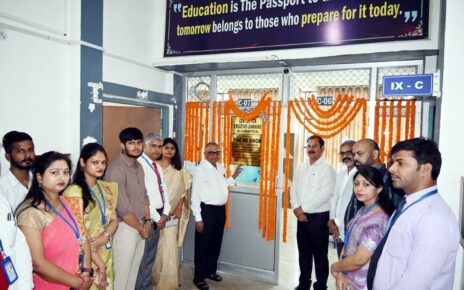Want to pursue a career in Dance/Movement Therapy? If you are looking for a career path that encompasses disciplines of the mind, body, and spirit, Dance/Movement Therapy may be the right fit for you. Riya, a contemporary dancer was looking for a career option that was not limited to choreographing or teaching dance but broadened her horizons to help people understand their needs through movement. She undertook a certification in Dance/Movement therapy and integrated her love for dance and her passion to help people understand human needs through free movement. However, let us first understand what Dance/Movement therapy is and why Riya chose this profession.
What is Dance/Movement Therapy?
American Dance Therapy Association defines Dance/Movement Therapy (DMT) as “the psychotherapeutic use of movement to promote emotional, social, cognitive, and physical integration of the individual. The focus of DMT is on free movement, the movement that is conscious or unconscious, reflecting the individual’s personality”.
अपना खोया/चोरी हुआ मोबाइल फ़ोन ब्लॉक करें Visit CEIR
धोखाधड़ी कॉल या एसएमएस की रिपोर्ट करें Visit CHAKSHU
अपने नाम पर मोबाइल कनेक्शन जानें Visit TAFCOP
Dance movement therapy promotes physical wellness by improving flexibility, muscle strength, decreasing muscle tension, body awareness, and building coordination in the body. It also benefits mental health by stress reduction, symptom relief, self-awareness, and emotional release. Studying Dance movement therapy helps to attain a mind-body connection, communicate non-verbally, empathize kinesthetically with the clients, and promotes healing through interventions and improvisational techniques pertaining to client needs.
Dance/Movement Therapy as a field gained popularity with the contribution of Marian Chace, who was a dancer, choreographer, and performer. After opening her own dance school, Chace began to understand the effects of dance and movement on her students. It was then that doctors and medical professionals started referring clients to her.
In 1966 Chace became the first president of the American Dance Therapy Association, an organization which she and several other DMT pioneers founded.
How to become a DMT professional?
To become a Dance therapist, it is important to have a background in dance. Being trained professionally in any dance form helps with understanding clients’ range of movement, movement language and mirrors their movements. An aspirant of becoming a Dance Therapist must have a Master’s degree in Dance/movement therapy from an accredited university or board. Certifications and diploma courses from various institutions can help integrate with your academic background and certify the aspirant to work with clients in the capacity of being a facilitator or a practitioner. Having a bachelor’s degree in any field is imperative, however, a liberal arts background can be helpful. Personally, I support having a background in psychology to identify clients’ needs as well as provide therapeutic interventions through the medium of art and movement.
The relationship between dance therapy and psychology
Counseling techniques:
Counseling techniques like empathy, active listening, rapport establishment, non-verbal communication, and understanding client needs are an integral part of Dance Therapy. The therapists, facilitators, or practitioners have to be trained in these aspects to enhance the client experience and tune with them. Learning about counseling techniques broadens the scope of aspirants to work with a variety of audiences and offers a safe space for the client process. A background in Counseling psychology can help understand these concepts in depth.
In clinical settings, trained professionals will have knowledge about using psychotherapeutic and movement techniques for symptom prevention, symptom management, rehabilitation, and remediation. Trained professionals working with people with disabilities will have an in-depth study of the neurological as well as physical components of the human brain and body. A Master’s in Clinical Psychology can help provide the required training.
Research:
Research is an important aspect in Dance/Movement therapy to determine the user’s motivation and benefits of therapy. Research is important to gather significant data and extract relevant information. Surveys, charts, questionnaires, and group discussions are often used to interpret data that is drawn from administering tests and using research techniques. Tests are also used to analyze movement language, improvisational techniques, map range of motion, use of space, quality of movement, response to instruction, and attunement.
Who am I?
I am an Applied Psychologist, Counselor, and a Creative Arts Therapy Facilitator. My passion for helping people find the best versions of themselves propelled me to start my own entrepreneurial venture post-graduation. As a mental health entrepreneur and a trained professional, I integrated my passion for movement and creative arts into my understanding of psychology to offer trauma-informed counseling services to people with disabilities, relationship difficulties, and occupational stress. Through my venture, I aim to provide a mental health service platform for people who have the intention to further self-growth and self-care that will enable them to find a purpose in life and make informed choices. I humbly seek the support of audiences to help make mental health accessible to people towards physical, emotional, mental, and social regulation.

Aarohi Doshi – Counseling through Creative Arts
23 February 2022
Enjoy Live Vivid Bharti Click here for more live radio
Advertisement 7007809707 for Ad Booking
Enjoy Live Mirchi Top 20 Click here for more live radio
Advertisement 9768741972 for Hosting Service
Enjoy Live Bhojpuri Songs Click here for more live radio
कृपया हमारे वेबसाइट को आगे बढ़ाने के लिए डोनेट करें Please donate to support our work

























 Your IP Address : 216.73.216.167
Your IP Address : 216.73.216.167